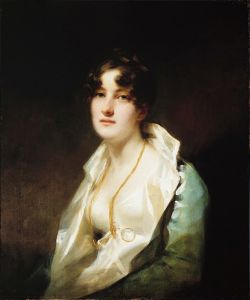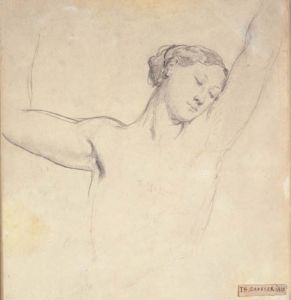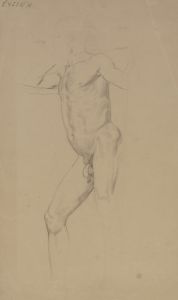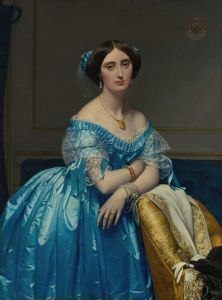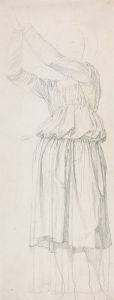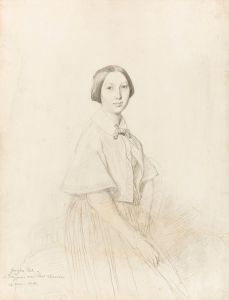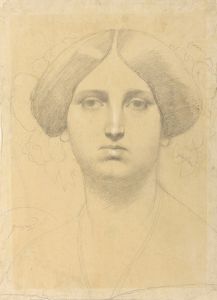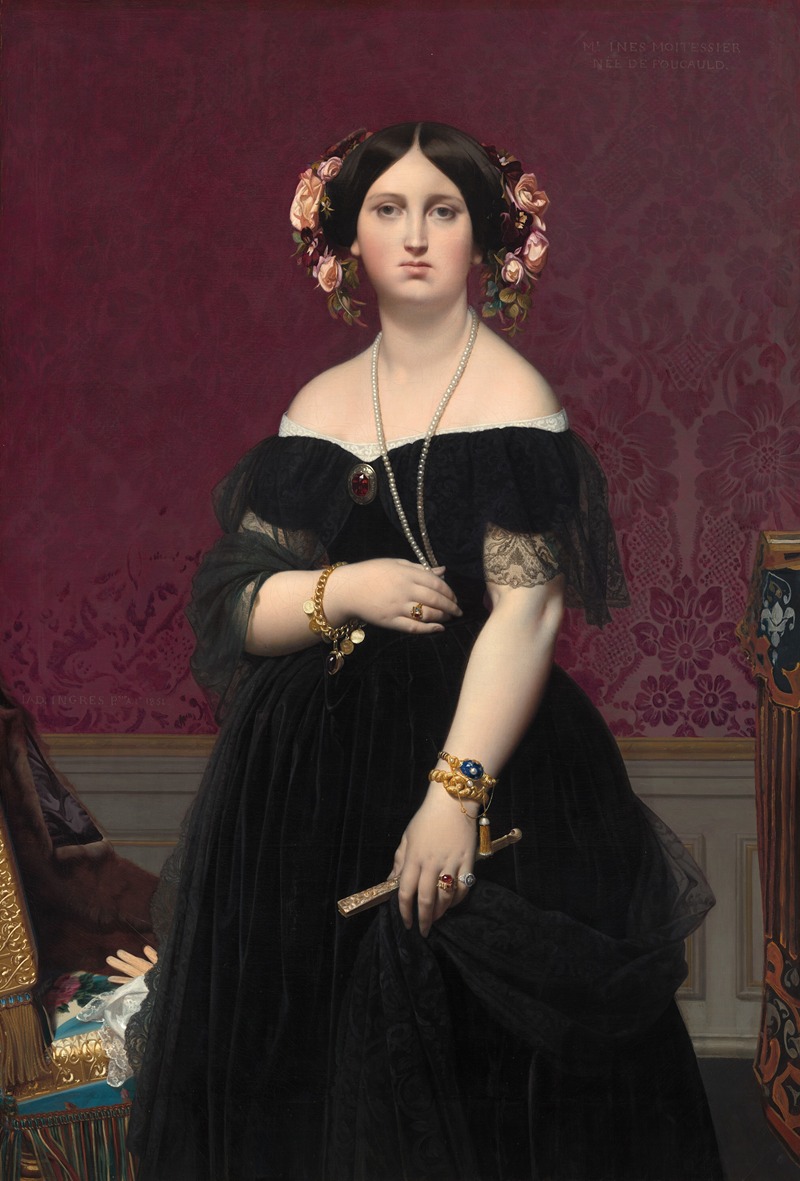
Madame Moitessier
A hand-painted replica of Jean Auguste Dominique Ingres’s masterpiece Madame Moitessier, meticulously crafted by professional artists to capture the true essence of the original. Each piece is created with museum-quality canvas and rare mineral pigments, carefully painted by experienced artists with delicate brushstrokes and rich, layered colors to perfectly recreate the texture of the original artwork. Unlike machine-printed reproductions, this hand-painted version brings the painting to life, infused with the artist’s emotions and skill in every stroke. Whether for personal collection or home decoration, it instantly elevates the artistic atmosphere of any space.
"Madame Moitessier" is a renowned oil painting by the French Neoclassical artist Jean-Auguste-Dominique Ingres. Completed in 1856, the painting is a striking portrait of Marie-Clotilde-Inès Moitessier, the wife of a wealthy banker. This work is celebrated for its meticulous detail, compositional harmony, and the artist's ability to convey the elegance and poise of his subject.
Ingres was approached to paint Madame Moitessier in 1844, but he initially declined the commission due to his busy schedule and other commitments. However, he was eventually persuaded to take on the project in 1847, inspired by Madame Moitessier's classical beauty, which he likened to that of a Roman goddess. The painting took several years to complete, with Ingres dedicating significant time to perfecting the details and composition.
The portrait depicts Madame Moitessier seated in an opulent interior, adorned in a luxurious gown with intricate patterns. Her pose is reminiscent of classical sculptures, with her right arm bent and her hand resting on her lap, while her left arm is elegantly raised, touching her temple. This pose is believed to have been inspired by ancient Roman frescoes, reflecting Ingres' admiration for classical art and his desire to imbue his subject with timeless grace.
Ingres' attention to detail is evident in the rendering of the textures and patterns of Madame Moitessier's dress, the sheen of her jewelry, and the delicate features of her face. The artist's skillful use of light and shadow enhances the three-dimensionality of the figure, while the muted color palette adds to the painting's serene and dignified atmosphere.
The background of the painting features a mirror that reflects part of the room, adding depth to the composition and showcasing Ingres' mastery of perspective. This inclusion of a mirror is a recurring motif in Ingres' work, often used to explore themes of reflection and self-perception.
"Madame Moitessier" is housed in the National Gallery in London, where it is considered one of Ingres' masterpieces. The painting is a testament to Ingres' ability to blend classical influences with his own distinctive style, resulting in a work that captures both the physical likeness and the inner character of his subject.
Ingres' portrayal of Madame Moitessier is not only a celebration of her beauty and social status but also a reflection of the artist's dedication to his craft. His meticulous approach and commitment to classical ideals are evident in every aspect of the painting, from the composition and pose to the intricate details and textures.
The painting remains a significant example of 19th-century portraiture, illustrating the enduring appeal of Ingres' work and his influence on subsequent generations of artists. "Madame Moitessier" continues to be admired for its technical excellence, its harmonious composition, and its ability to convey the elegance and sophistication of its subject.






